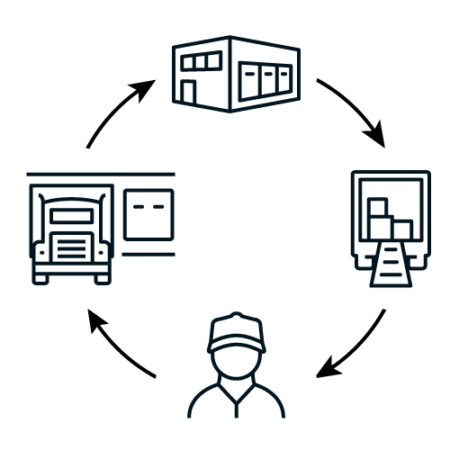Reverse Logistics Management

What if the final mile has one more leg? Utilizing reverse logistics in your Supply Chain Management gets you there.
We’re all consumers and likely more than once (okay, frequently), we get something delivered to us at home or buy something from a store and for whatever reason, it needs to be returned. If it is something that’s unopened, the retailer can put it back on their store shelf and make it available to purchase for someone else.
But…what if it’s been shipped a half a world away, opened, is defective or needs to be shipped back and reconditioned before it can be sold again or returned to that foreign country? What if it can only be donated or written off? What if there is no channel other than destruction?
In all of these cases, shippers selling to businesses and consumers need to have a plan to manage their reverse logistics. Reverse logistics is the business, art, and science of getting a product back and then determining what step to take next.
Cargo owners who need to cope with returns need to have a robust reverse logistics plan. Here are three things that need to be considered when considering reverse logistics.
How much and what is coming back?
Buyers return goods for a variety of reasons, some valid, some not. An accurate accounting of how many sales are not final is essential for a cargo owner to determine what kind of volumes to expect. This allows for budgeting costs for shipping, warehousing, handling, and if required, disposal. With an idea on the rate of return, additional calculations can be made in the first sale price to protect for the losses that will happen on the return.
What if what I’m shipping is hazardous?
This is a good question and one that parcel companies, the Postal Service, and truckers are asking at the point of acceptance. If a product goes out with a lithium battery and is returned, then that battery needs to be declared. What if the product is prohibited from being shipped by air? Does the accepting warehouse have a hazmat plan, is certified, and has been provided with applicable MSDS sheets in case of emergency for first responders?
How do I manage returns of exports?
Trust Bestway to work with you and our overseas offices to make the choices on both whether or not to return the goods and by what mode of transportation.
If the goods are refused, perhaps there is another seller in that country or global region who would accept them? Bestway can arrange to move goods between foreign countries.
What if they need to be returned for repair or reconditioning? Working with Bestway, we determine the requirements of the shipment in terms of overall shipping time and the entry of the goods upon their return to the United States and perhaps eventual re-export.
Regardless of whether the returned shipment is within the United States or somewhere overseas, Bestway can assist.
Let us help design your reverse logistics strategy.
Reverse logistics doesn’t need to be complex. We’re well-versed in bringing the goods in from an overseas seller or out to an overseas buyer. We have at our fingertips offices and warehouses and labor in global markets that have dense populations of distribution facilities and air and seaports for ready shipping.
With Bestway, “We’ve got a return,” won’t be a disappointment – it’s another opportunity at a sale.
